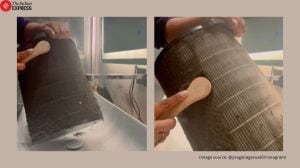Euro zone factories contract: PMI
The euro zone's dominant service sector was effectively stagnant this month after two years of growth.
The euro zone’s dominant service sector was effectively stagnant this month after two years of growth while manufacturing activity,which drove a large part of the economic recovery in the bloc,shrank for the first time since September 2009,key surveys showed on Tuesday.
The surveys,which point to flat quarterly GDP growth,will give scant relief to policymakers struggling to contain the region’s debt crisis and add to signs that an economic slowdown is spreading beyond the periphery and taking root in core members of the bloc.
There is a weakness in the core countries,Germany in particular. The euro zone is losing its main motor of growth,said Chris Williamson at data provider Markit.
The Flash Markit Eurozone Services Purchasing Managers’ Index (PMI) fell to 51.5 this month from 51.6 in July,its lowest level since September 2009 but confounded expectations for a larger fall to 50.9.
The index,which measures activity of firms ranging from restaurants to banks,has now been above the 50 mark that divides growth from contraction for two years.
And some of that growth was driven by firms fulfilling old orders,with the backlogs of work index falling to 48.8 from 49.6,its lowest since October.
The PMI for the manufacturing sector slid to 49.7 — its first sub-50 reading since September 2009 — although economists had predicted a marginally steeper fall to 49.5.
Output in the sector held steady,with the index at 50.0,down from July’s 50.2 and its lowest since July 2009.
Manufacturing is struggling but that has been joined by a weakening of services sector growth. The outlook for the service sector has also fallen sharply,Williamson said.
The euro zone composite PMI,a broader measure of the private sector which combines the services and manufacturing data,held steady at 51.1,beating forecasts for a fall to 50.1.
The composite index is often used as a guide to growth and Markit said it was consistent with no quarterly growth in the current quarter. Economists polled by Reuters earlier this month predicted growth of 0.3 percent this quarter.
Earlier data from Germany,Europe’s largest economy,showed its manufacturing sector grew faster than expected but growth in its service sector virtually ground to a halt.
In France the service sector unexpectedly picked up pace but factory activity declined for the first time in over two years.
EXPORTS FALL
The grim numbers come on top of fears that the United States,the world’s largest economy,will slide back into recession and after earlier flash data showed activity in China’s manufacturing sector shrank in August for a second month running.
New export orders for euro zone manufacturers fell for the second consecutive month as a slowdown in leading economies took hold. The subindex fell to 47.4 from July’s 49.2,the lowest level since June 2009.
There is the dual-whammy of the global cycle turning down and at the same time the domestic market being hit by concerns about the debt crisis and biting austerity measures in neighbouring countries,Williamson said.
Firms found it increasingly hard to pass on price rises to customers and the composite output price index fell to 51.3 from July’s 53.0,its lowest reading since November.
Euro zone inflation was at 2.5 percent in July,official data showed last week,lower than the 2.7 percent seen in June but still above the European Central Bank’s 2 percent target ceiling.






- 01
- 02
- 03
- 04
- 05

























